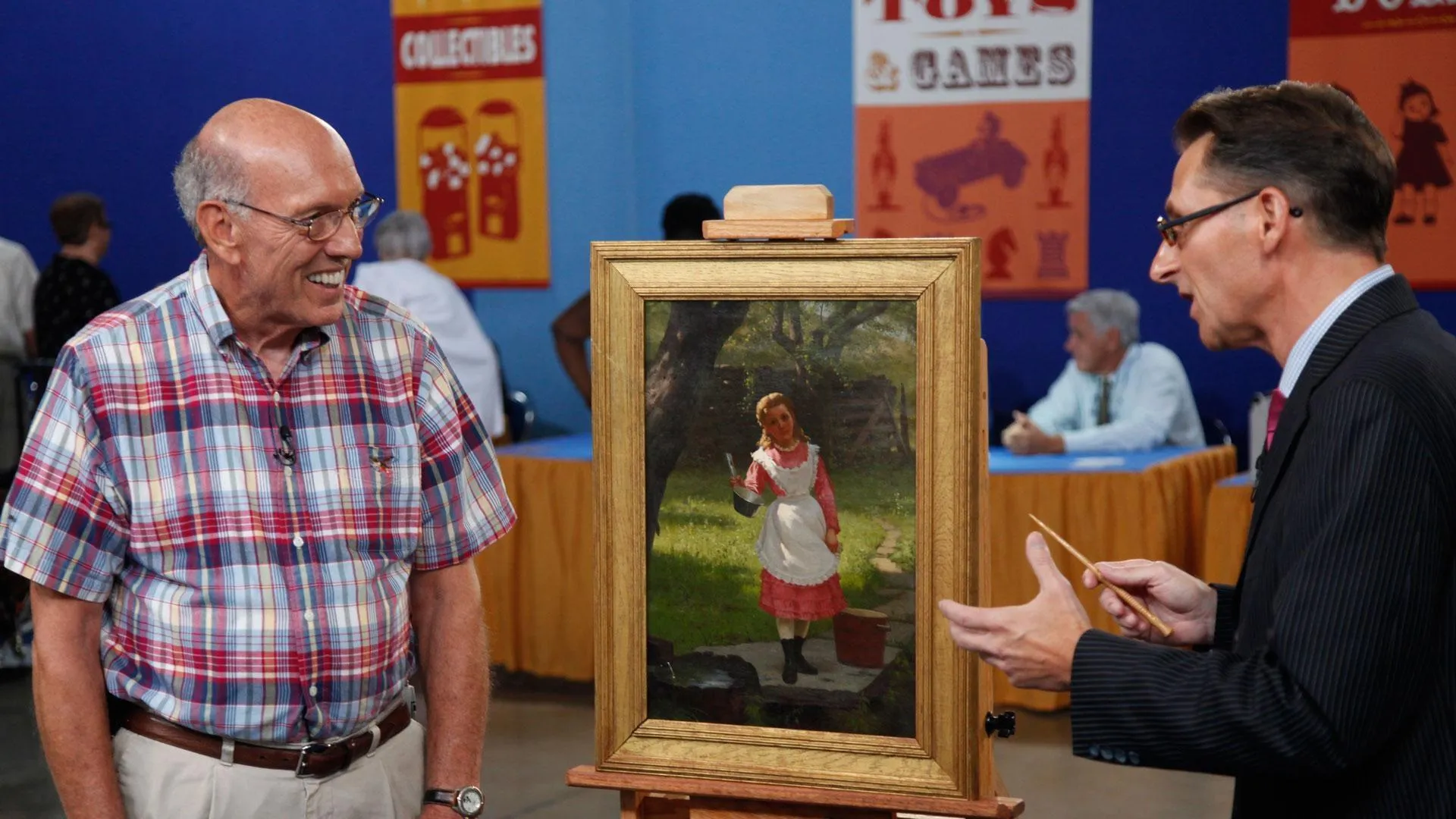GUEST: I bought it at an estate sale at least 20 years ago, and I bought it because I really like the colors and it looks sort of modernist. We love the Southwest. We love going there, the whole atmosphere. And when I saw this, I thought, "Well, I really like that, so why not?" I didn't pay too much. It was around $300, I think, I paid for it.
APPRAISER: Now, what do you know about the artist? Do you know much about him?
GUEST: I did at one point look him up, and I found that he was a Taos School artist. And he was a listed artist and did, at the time, have an auction record. And I thought it was around $1,200 to $1,500.
APPRAISER: Well, the artist's full name is Andrew Michael Dasburg. It's signed and dated over here on the left-hand side, "Dasburg 1962." Now, Dasburg was actually born in France. By the time he was five, he emigrated with his family to the States, and he was, if not a prodigy, at least a talented young man. And one of his teachers suggested he take drawing lessons. So he went to the Art Students League. This was in the early 1900s. And he was studying with artists who were very representational, very sort of impressionistic and traditional in the way they would approach landscape. And this didn't appeal to him. He finally decided to take classes with Robert Henri, who was of the Ashcan School.
GUEST: Okay.
APPRAISER: And Henri really was a proponent of artists who would do their own thing, not feel obliged to stay in the mode of their teachers. And this certainly had a much stronger appeal to Dasburg. Late in 1908, early 1909, he went back to Paris. He sees the work of Picasso. And then in 1910, he sees the work of Cèzanne. Suddenly, he sort of finds his bearings and figures out what he wants to do. He starts doing something that's a little bit more cubist, and that's what we're seeing here in this work. By 1913, he's already very successful. He's showing in the Armory show. The Armory show in New York was very controversial. It was artists from Europe who were really being modern and new, compared to the American artists, who were sort of stuck in their old ways. This solidifies his ideas about modernism, and he takes on this cubist style. He starts going to Taos by the end of the 19-teens and finally moves there in the 1930s. And he takes on this very cubist sort of style, where, in spite of the fact that it's a desert landscape, populated with only a few adobe houses, we get this very modernist feel. Were this to go up at auction today, you could reasonably expect it to fetch $20,000 to $30,000 at auction.
GUEST: Oh, my God. I am as... absolutely astounded. I never expected that much. I thought maybe, well, if I'm lucky, it'll be $5,000 or $6,000. I am absolutely amazed, absolutely amazed.
APPRAISER: Wonderful.
GUEST: What did you say again? Twenty to what?
APPRAISER: $20,000 to $30,000 at auction.
GUEST: Oh, my God.



